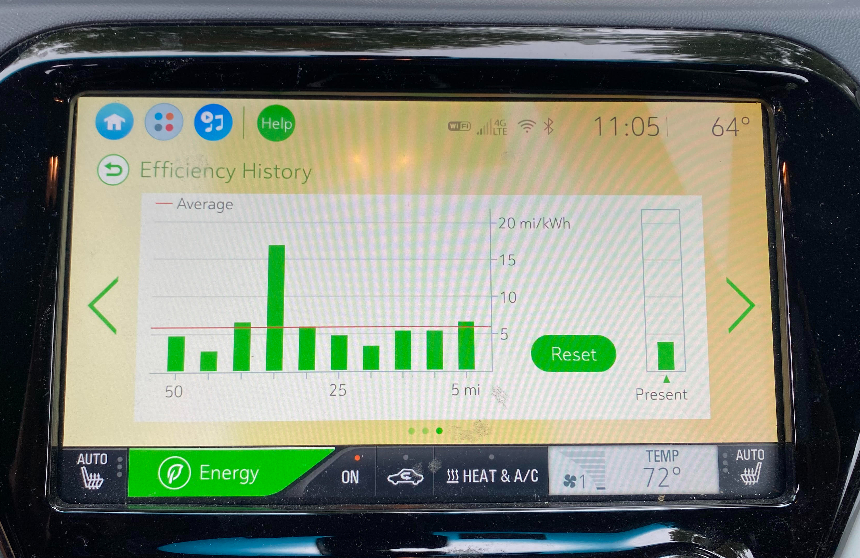Sign up for daily news updates from CleanTechnica on email. Or follow us on Google News!
Every time I publish an article or post something on LinkedIn pointing out the economic folly and inevitable cul-de-sac of hydrogen-for-energy, commenters drag out new examples of bad hydrogen schemes, whether as ideas they think are proving my point or examples that disprove my thesis. After publishing on Canada’s $25 billion, progress-light and reality-deficient hydrogen strategy recently, one of the comments asserted that Edmonton would be getting a new subdivision entirely heated by hydrogen.
What’s the organizational provenance of this idea? Well, it’s mostly ATCO, the Alberta-based family business that not only provides those ubiquitous green and white construction modular offices, but also has a natural gas utility in its portfolio of businesses (along with now sold and natural gas generation plants). Yes, ATCO is firmly embedded in Alberta’s fossil fuel ecosystem, and like the majority of gas utilities globally, is trying to pretend that hydrogen is its get-out-of-utility-death-spiral-free card.
They are already building a hydrogen home in Sherwood Park, an Edmonton-area bedroom community with Qualico, a commercial and residential real estate developer with offices in Edmonton, Calgary, and Winnipeg. Yes, another Alberta company, more than not, and hence fully enmeshed in the odd perspective on reality that thrives in the province in these waning days of the fossil fuel industry.
ATCO and Qualico are promoting the idea of a bunch of mostly empty land, about 2,000 hectares in Strathcona County over 20 kilometers from downtown, as the location of an 85,000-resident development heated entirely by hydrogen and with hydrogen stoves. They claim that that there are lots of Europeans living in homes and multi-unit residences with hydrogen-certified appliances, which is frankly a complete misstatement. Similar to ATCO, many European gas utilities have been trying to force hydrogen through residential and commercial buildings’ front doors, but there has been a distinct lack of progress in that effort and I’m unaware of any residences except demonstration units like the single ATCO home under construction in Europe that are “hydrogen-ready.”
As Paul Martin and others say, hydrogen-ready is the equivalent of saying that your driveway or garage are Lamborghini-ready. That you could park a Lambo there in no way means you can afford to own a Lambo.
ATCO and Qualico are lined up at the governmental trough for this. Just studying the idea got them CA$2 million in Alberta Innovates grants. That Alberta Innovates is collaborating with gas utilities around bad ideas like this is fairly standard for the organization, which is a bit light on reality when it comes to the actuality of the transition and tends to believe whatever the people writing the grant — usually fossil fuel industry or adjacent — say.
Amusingly, ATCO is making the bald-faced claim about hydrogen heat that it emits no carbon monoxide and hence is good. They don’t mention that burning natural gas, their primary offering, is the only source of carbon monoxide in most homes. They don’t mention that burning hydrogen would create more nitrous oxides which are bad for childhood asthma and those with respiratory ailments.
ATCO also received $900,000 for a Fort Saskatchewan hydrogen operation center and center of excellence for blending hydrogen into existing natural gas lines, another zero positive impact idea that gas utilities globally are promoting. For context, at maximum 10% hydrogen can be blended in most North American natural gas pipelines because of the characteristics of the steel. That 10% is a third as dense as natural gas, so the same volume of gas has less energy. The hydrogen also leaks a lot more than the methane, as hydrogen molecules are much smaller than methane molecules, and hydrogen has an indirect global warming potential of about 12 times that of carbon dioxide. There is no climate benefit to blending hydrogen into existing natural gas lines.
Is the residential community likely to be built? No. The lands have been on the market with a bunch of proposals for yet another residential bedroom community for Edmonton for 20 years. ATCO and Qualico aren’t buying the lands. A real estate agent has had hundreds of acres of the land listed since 2019 and they haven’t moved. This is just a very well funded delaying tactic study.
If the community were built, what would be the results?
Let’s start with the price of energy. ATCO being a gas utility, obviously the comparison would be to their residential rates. Most residences in ATCO north region which includes Edmonton and Strathcona consume around 120 gigajoules per year per ATCO’s data. They have a $1.91 per day delivery charge which adds up to $700 per year. They get charged $2.20 per gigajoule of natural gas which adds up to $270 a year, for a total of about $1,000 per year. That’s dirt cheap, which explains the horrendously bad insulation in sprawling Albertan houses.
How bad and sprawling? Well, in Sweden, the average household uses 72 gigajoules of energy for everything in a year, including heating, cooking, hot water, lights, stereo, TV, and electric cars. Albertans use over 60% more energy just for the heating components of that. While you can’t get to zero carbon with efficiency if you continue to burn fossil fuels, a history of dirt cheap fossil fuels in in a fossil fuel economy spells trouble for the building stock in terms of well insulated envelopes.
That $2.20 in the range of the BC and Ontario rates per gigajoule I quoted in my assessment of Canada’s hydrogen strategy and progress, a little bit lower than BC’s and about 60% of Ontario’s. As I pointed out in that material, the cost of manufacturing low-carbon hydrogen per gigajoule would be about $24 per gigajoule for blue hydrogen (which ATCO and Alberta would undoubtedly be pumping) and about $47 per gigajoule for green hydrogen.
Assuming the low end manufactured cost of $24 and assuming that ATCO actually wants to make a profit per gigajoule, call it 15% so $28. There are no hydrogen pipelines servicing the 2,000 hectares. 100% new hydrogen pipelines would have to be laid, and they cost more than natural gas distribution pipelines, both for the pipes and for the compressors, because of hydrogen’s strong tendency to leak and low density. That would likely mean that consumers would have to pay 50% more for the delivery charges as well.
Assuming that they would use the same gigajoules on average per year, that would be $3,300 for the gigajoules plus another $1,000 for the delivery charges, $4,300 in total.
Which Albertan resident is going to be remotely interested in paying over 4 times more for heating and cooking? Which landlord is going to be remotely interested in eating those costs as part of rent?
Remember, that’s with blackish blue hydrogen. Green hydrogen would come in, with best case hydrogen manufacturing costs, at around $6,500 per year, over six times as expensive. More realistic costs for green hydrogen would bump that up to a cool $10,000.
Is there anything else? Yes, yes there is. Safety requirements for homes with hydrogen appliances based upon European and North American studies would require 10 centimeter vent holes to the outside in every room with a hydrogen appliance. The big holes represent a large loss of heat energy to the outside because you can’t easily let the hydrogen out while keeping the heat in. That means the actual gigajoules required for heating will actually go up. That $4,300 is probably closer to $5,000.
Anything else? Safety. In the USA, 4,000 buildings a year suffer natural gas fires and explosions. Safety assessments out of the UK and the continent of hydrogen for domestic and commercial heat requirements show that hydrogen would represent a 400% increase in risk of fires and explosions due to the characteristics of the gas. Along with the big holes in the walls, hydrogen detectors that cost several hundred dollars per home would be required. Further, insurance costs would be commensurate with the risks. The average Edmonton home paid $1,500 in home insurance in 2021. Make that $2,000 to $2,500. Perhaps more.
If only there were an alternative for a master-planned, new-build 2,000-hectare, 85,000-resident community. If only district heating solutions with ground source, electrically powered heat pumps actually existed. If only the community were built to Swedish insulation standards. At 85,000 residences, let’s call it 2.51 people per household, the Canadian average, so that’s 34,000 units.
With good insulation in mostly multi-unit residential buildings, gigajoules for provision of heating plummet to perhaps 40 per household. With shaft-type — drilling! Something Alberta is good at! — ground source heat pump coefficients of performance of 4 in the heating season, one unit of electricity will provide four units of heat, so 10 gigajoules of electricity would be required annually by each household. That’s about 3,000 kWh, and even at Alberta’s high 17 cents per kWh regulated residential rate during the winter season, that’s only $500 per unit.
Alberta’s electricity carbon intensity has declined as they ditched the last of their coal plants, although the decline is stalled by the province’s ideologically motivated war on renewables, and is now at claimed 590 grams of CO2e per kWh. That likely understates the actual CO2e as methane emissions from Alberta’s oil and gas industry and from methane-burning devices like combined cycle gas generators are now known to be much higher than previously reported, but it’s the official number, so let’s go with it.
Burning a gigajoule of natural gas produces 50 kilograms of CO2. The average Edmonton area home’s heating is producing 6 tons of carbon dioxide per year. With the heat pump district heating model, the average unit would have a carbon emissions load of about 1.6 tons of CO2 per year. And, of course, when sanity prevails again in Alberta and they re-start decarbonizing their electricity, that will drop. At BC’s 11.3 grams of CO2e per kWh, the average unit would have a carbon debt of only 0.031 tons of CO2.
Oh, and all of those units would have air conditioning with coefficients of performance of 8, so only one unit of electricity is required to move 8 units of heat out of the building. One in three Albertans had air conditioning as of 2019 because summers are getting hotter. Heat pumps are two way air conditioners. Ground source heat pumps in district heating and cooling systems are incredibly efficient and effective and are used globally.
This is why the UK is abandoning hydrogen residential heating trials. This is why a meta-analysis by Jan Rosenow, Director of European Programmes at the Regulatory Assistance project, found 54 independent studies as of December 2023 that have found there is no merit in hydrogen for residential heat.
This isn’t remotely hard math. ATCO can do this math and undoubtedly has. This is predatory delay, not a serious proposal to build a hydrogen-heated subdivision near Edmonton. It’s nice to be given $2,000,000 of taxpayers money to restudy something which has been studied to death, and to be allowed to spread disinformation about European plans while you’re doing it. But as with all hydrogen for energy schemes, looking at the raw data makes it clear that it’s not remotely viable. The couple of million is wasted money, more subsidies for the fossil fuel and fossil fuel adjacent industries.
Have a tip for CleanTechnica? Want to advertise? Want to suggest a guest for our CleanTech Talk podcast? Contact us here.
Latest CleanTechnica.TV Video
CleanTechnica uses affiliate links. See our policy here.





